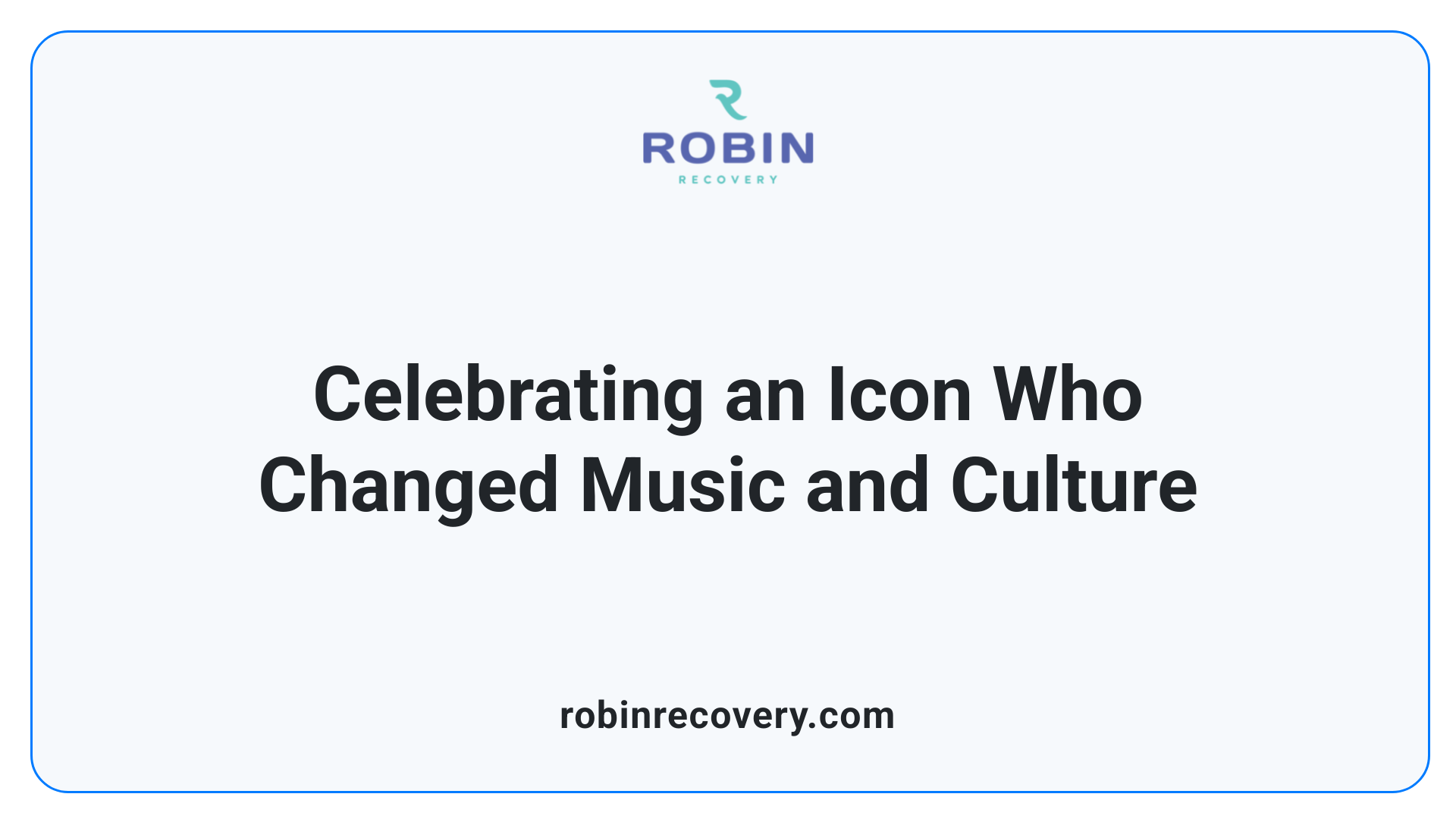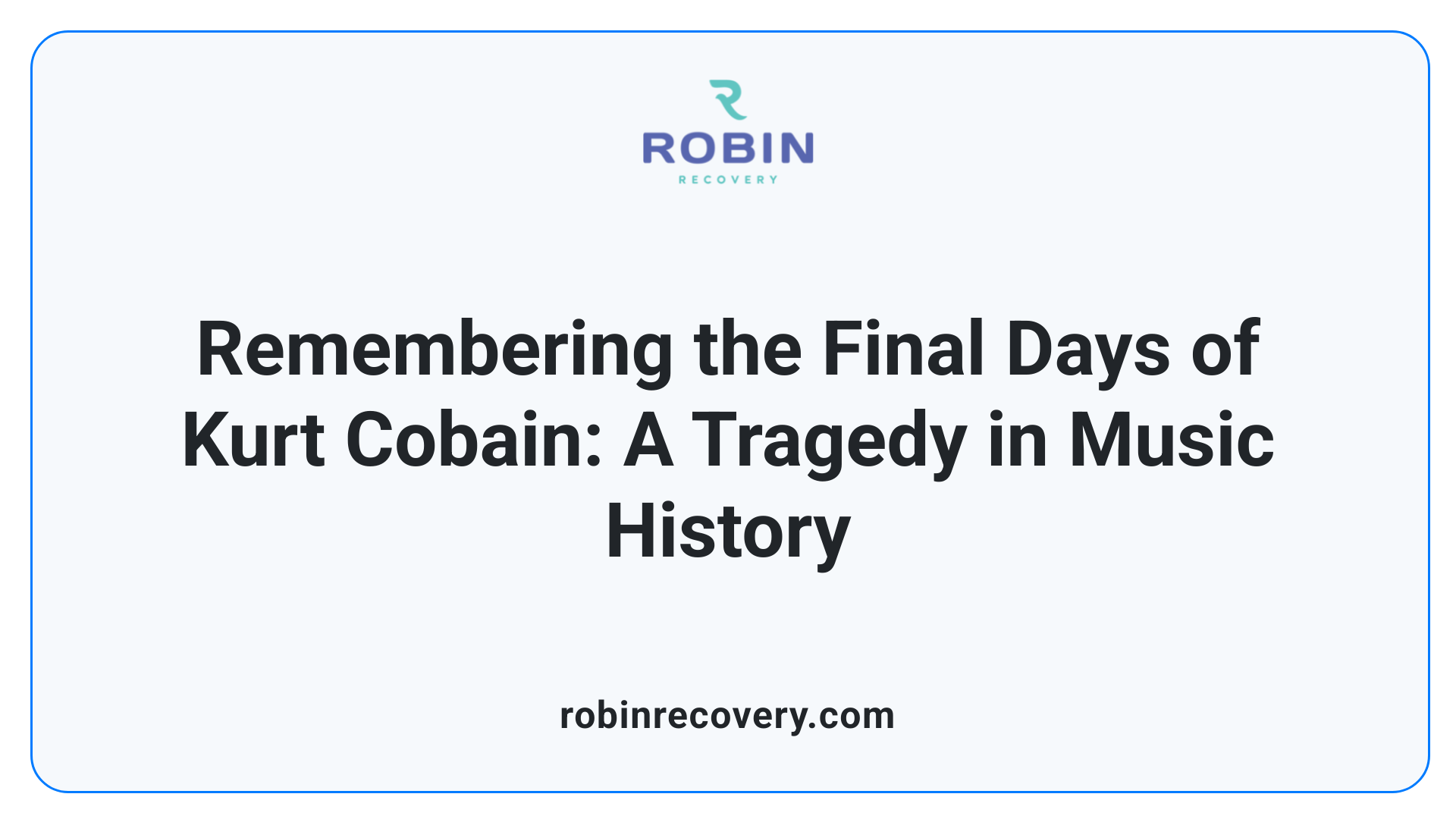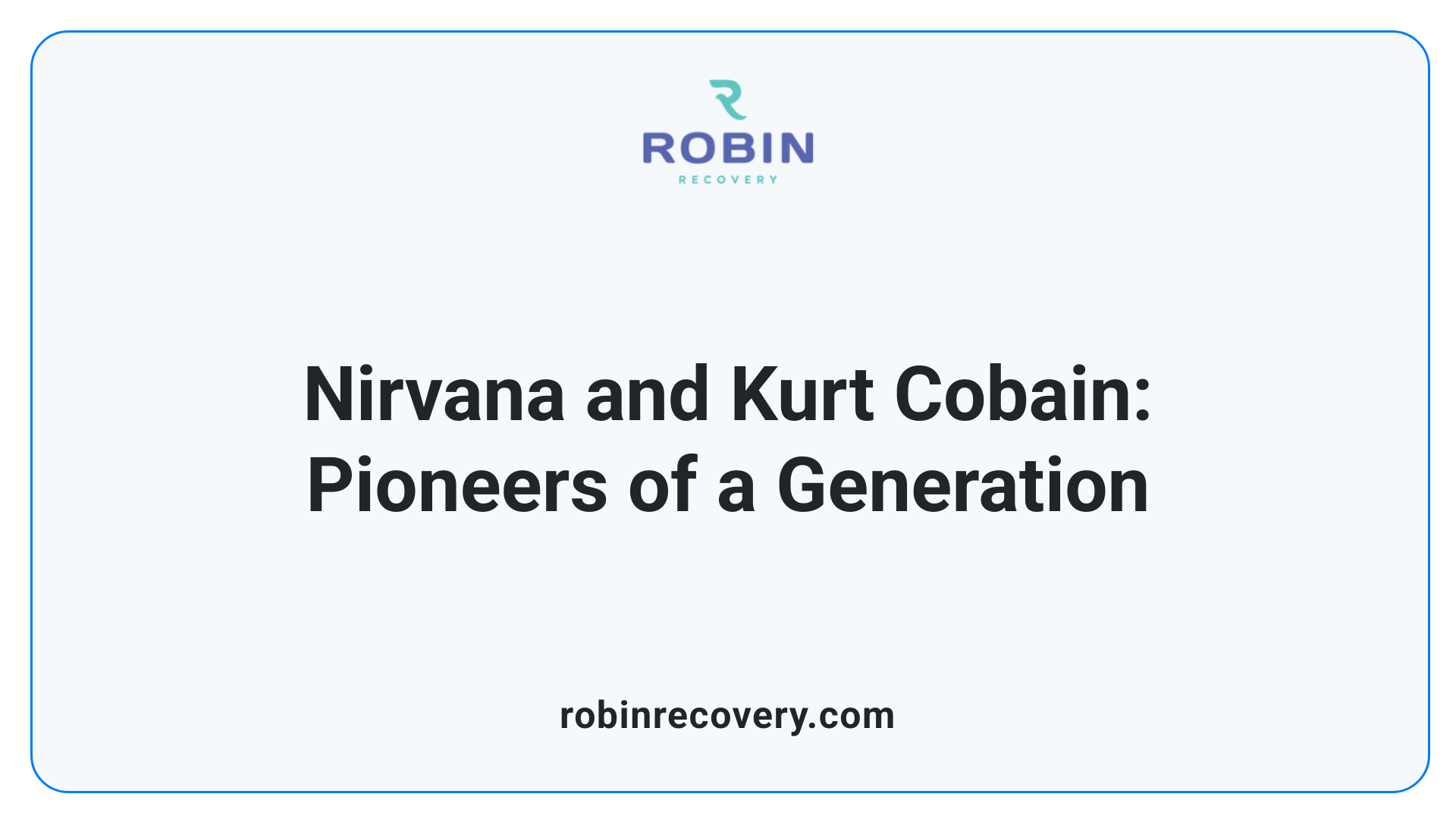Remembering Kurt Cobain

A Deep Dive into the Life and Legacy of Kurt Cobain
Kurt Cobain remains one of the most influential and complex figures in rock history. As the frontman of Nirvana, his music and persona transformed the cultural landscape of the 1990s, echoing through generations long after his tragic death. This article explores his life, the circumstances of his passing, his ongoing legacy, and the ways in which fans and institutions continue to honor his memory.
Kurt Cobain: A Revolutionary Artist and Cultural Icon

Who was Kurt Cobain and what is his significance in music and culture?
Kurt Cobain was an influential American musician, singer, and songwriter best known as the frontman of Nirvana. His contribution to music went beyond just songs; he became a symbol of authenticity, innovation, and youth rebellion. Nirvana's breakthrough album, "Nevermind," catapulted grunge music into the mainstream in the early 1990s, with hits like "Smells Like Teen Spirit" resonating deeply with disaffected youth.
Cobain's songwriting was marked by its raw emotional power and honesty, vividly expressing feelings of alienation, depression, and social criticism. His distinctive voice and guitar style helped shape the sound of alternative rock, impacting countless artists and genres.
Not just a musical icon, Cobain influenced fashion and cultural attitudes, challenging mainstream norms. His anti-establishment stance and tragic life story made him a lasting figure, symbolizing both artistic integrity and the internal struggles faced by many young people.
Despite his short life—dying at age 27 in 1994—his legacy endures through his groundbreaking music, induction into the Rock and Roll Hall of Fame, and ongoing admiration from fans and musicians worldwide.
What was the cultural and historical significance of Kurt Cobain and Nirvana?
Kurt Cobain and Nirvana played a central role in defining the grunge subgenre, emerging from Seattle's underground scene to global recognition. Their meteoric rise in late 1991 marked a significant cultural shift, placing Seattle and the Pacific Northwest at the heart of alternative music.
Nirvana's unpolished, emotionally honest sound influenced a new generation of musicians and changed the landscape of popular music. The band's success helped bring alternative rock into mainstream consciousness, transforming industry standards and popular culture.
Their impact extended beyond music; Nirvana's fashion, attitude, and lyrical honesty resonated with youth, making them icons of Generation X. Noteworthy is the group's performance at the 1992 Reading Festival, which encapsulated their status as cultural leaders.
Today, the Museum of Pop Culture in Seattle houses extensive exhibits about Nirvana, showcasing their influence through artifacts, recordings, and personal stories. Their legacy is that of pioneers who revolutionized not just how music sounded, but how it expressed societal feelings and individual struggles.
Aspect Details Significance Formation Nirvana formed in 1987 in Aberdeen, Washington Launch of a new musical movement Major Albums 'Bleach,' 'Nevermind,' 'In Utero' Musical milestones shaping grunge Key Hits 'Smells Like Teen Spirit,' 'Heart-Shaped Box,' 'Come as You Are' Defining 1990s culture Cultural Impact Brought Seattle's scene to prominence Shift from mainstream rock to alternative Legacy Inducted into Rock & Roll Hall of Fame in 2014 Enduring influence
Kurt Cobain’s life and work remain a testament to the power of authentic artistic expression and the ongoing cultural dialogue about youth, mental health, and societal norms.
The Tragedy and Final Days of Kurt Cobain

What were the circumstances surrounding Kurt Cobain's death?
Kurt Cobain died by suicide in April 1994 at his Seattle home. His body was discovered on April 8, but the official date of death was recorded as April 5. The investigation revealed that Cobain shot himself with a shotgun positioned on his chest inside a greenhouse located above his garage. A suicide note was found nearby, providing insight into his state of mind.
Cobain had a long history of depression and struggled with chronic drug use, which included heroin, Valium, and morphine. In the months leading up to his death, he had made a previous suicide attempt in March 1994. Despite purchasing a shotgun shortly before his death and experiencing intense emotional distress, official inquiries concluded that his death was self-inflicted. While this remains the official verdict, conspiracy theories have circulated, suggesting alternative narratives.
His struggles with addiction and depression
Cobain’s battles with mental health issues and addiction were well-documented. His lyrics and public statements often reflected his feelings of despair and unhappiness, which resonated with many fans. His heroin addiction was particularly significant; Nirvana’s former manager, Danny Goldberg, observed that Cobain struggled with substance dependency from early in his fame.
Despite efforts from friends and family to help him recover, Cobain relapsed into drug use and refused rehab in 1994. His struggles were compounded by media scrutiny and the pressures of fame, which he found overwhelming. His emotional and physical health deteriorated in these final months, culminating in his tragic death.
Last performances and last days
In the months before his death, Cobain participated in a few notable performances. His last live show with Nirvana took place on March 1, 1994, in Munich, Germany, where they performed several songs including a cover of The Cars' "My Best Friend’s Girl." This performance was symbolic, as it was just over a month before his death.
Nirvana's final performance was at the MTV Unplugged concert in November 1993, a session that achieved critical acclaim and sold over five million copies. This intimate acoustic set remains one of Cobain’s most celebrated live moments.
During his final days, Cobain was increasingly withdrawn and overwhelmed by his emotional pain. He was recovering from a drug overdose, but his relapses and refusal to seek help indicated the severity of his struggles. His death left a profound void in the music world and among his fans, who continue to mourn and memorialize his legacy.
The Cultural and Lasting Impact of Nirvana and Kurt Cobain

What is the cultural and historical significance of Kurt Cobain and Nirvana?
Kurt Cobain and Nirvana played foundational roles in shaping the grunge movement and transforming the cultural scene of the early 1990s. Their rise to fame in late 1991 not only put Seattle and the Pacific Northwest on the global musical map but also revolutionized the rock landscape. Nirvana’s raw and authentic sound, coupled with Cobain’s introspective songwriting, helped propel alternative rock into mainstream popularity, influencing countless bands and artists after them.
Their impact extends beyond music into broader cultural realms. Their style, attitudes, and lyrics resonated deeply with youth disillusionment, shaping the identity of Generation X. The Museum of Pop Culture in Seattle boasts the world’s most extensive Nirvana exhibit, featuring rare artifacts and oral histories that reflect their cultural significance. Overall, Cobain and Nirvana’s contributions marked a pivotal shift in both music and societal attitudes, cementing their status as iconic figures whose influence endures today.
Are there personal stories or reflections from fans and artists about Kurt Cobain?
Numerous personal stories and reflections from fans and fellow artists highlight the profound impact Kurt Cobain had on individual lives and the music scene. Journalists and those close to him have shared intimate accounts—such as David Fricke’s recounting of meeting a heroin-withdrawn Cobain in 1992 or Krist Novoselic's memories of their early days—revealing facets of his personality and struggles.
Fans often speak of how Cobain’s emotional depth, vulnerability, and honesty in his lyrics continue to resonate across generations. Musicians like Beck and Billy Joe Armstrong have openly expressed admiration for his influence, citing how his music shaped their own creative journeys. Some artists reflect on his self-awareness and the difficult realities he faced, acknowledging that his openness remains a source of inspiration. Recognizing his complex character enhances understanding of why Cobain remains an enduring figure in music and culture.
What are some ways to honor Kurt Cobain's memory?
Honoring Kurt Cobain's legacy can take various meaningful forms. Fans often visit memorial sites near his Seattle home or Viretta Park, which has become a poignant place for tribute, leaving letters, flowers, and tributes. Participating in memorial events, such as Kurt Cobain Day in Aberdeen or anniversary tributes like the 30th memorial, helps keep his memory alive within communities.
Supporting mental health initiatives or music education programs inspired by his life aligns with his enduring influence. Engaging with exhibitions at the Museum of Pop Culture that showcase his memorabilia or listening to influential recordings, such as Nirvana’s MTV Unplugged performance, can deepen appreciation for his artistry. Sharing personal stories, reflections, and creative tributes—like art or music inspired by him—also sustain his legacy. Ultimately, these acts of remembrance foster ongoing connection and ensure that Cobain’s impact persists.
Aspect Details Additional Notes Significance Shaped the grunge movement, affected youth culture Brought Seattle into the musical spotlight Personal Reflections Encounters with Cobain, fan tributes, artist comments Highlights his emotional influence and struggles Ways to Honor Memorial visits, exhibits, sharing stories Supports his legacy and ongoing inspiration
Kurt Cobain’s influence is multifaceted, influencing not just music but also cultural attitudes and artistic expressions. His enduring legacy is preserved through memorials, exhibitions, and the heartfelt memories of those who loved him or were inspired by his artistry.
A Lasting Legacy
Kurt Cobain's life was marked by extraordinary talent, deep personal struggles, and an indelible impact on music and culture. Though his life was tragically cut short at age 27, his voice and vision continue to inspire artists and resonate with fans worldwide. Through memorials, exhibits, and ongoing tributes, his memory persists as a symbol of artistic authenticity, youthful rebellion, and enduring creative spirit. As the 30th anniversary of his death reminds us, Kurt Cobain remains a vital cultural icon whose influence will endure for generations to come.
References
- Serving the Servant: Remembering Kurt Cobain - Amazon.com
- Serving the Servant - Wikipedia
- Nirvana's Kurt Cobain remembered 30 years after his death in Seattle
- 'He was ours' - Seattle remembers Kurt Cobain on 30th anniversary ...
- Reflecting On Kurt Cobain's 'Crystalline Understanding' 25 Years Later
- Remembering Kurt Cobain With 5 Memorable Nirvana Performances
- 9 Musicians Remember Kurt Cobain - Time
- Kurt Cobain: Remembering the Seattle artist 30 years later | king5.com
- Remembering Kurt Cobain 3 decades after his untimely death
